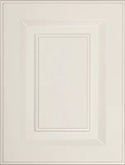It’s no secret that we all age. And that’s okay! But as we grow older, our homes should adapt to our changing needs if we want the option to remain in our homes as our physical needs change. One of the most crucial areas of change to address is the kitchen, our central hub for daily tasks. Whether you are planning ahead for your golden years, or just looking to accommodate the needs of older family members, remodeling your kitchen with accessibility in mind is a smart investment. Check out how you can remodel your home, perfect for aging in place!
In this blog, we’ll explore the key things to consider for this type of remodel, as well as design principles for creating a safe and accessible kitchen that allows you and yours to age in place!
Why remodel for accessibility? 
Before we dive into the remodeling process, it’s important to understand the significance of creating an accessible kitchen. Aging in place or living independently in your home as you grow older is a goal for many people. An accessible kitchen can play a pivotal role in achieving this objective for several reasons:
- Safety: The risk of accidents and injuries in the kitchen are already present but increases as we age. An accessible kitchen minimizes hazards and provides a safer environment.
- Independence: An accessible kitchen empowers homeowners to continue preparing their meals, making independence and self-sufficiency a tangible concept.
- Comfort: Making the kitchen more accessible ensures that it will remain comfortable and functional, allowing you to enjoy your home fully.
Now, let’s explore some key elements to consider for your remodel.
Universal Design Principles
Universal design is an approach to create spaces and products accessible to people of all ages and abilities. Incorporating this into your remodel can make it more adaptable. Here are some concepts to keep in mind.
- Wide doorways/hallways: Ensure that doorways and paths leading to the kitchen are wide enough to accommodate wheelchairs or walkers.
- Low-threshold entries: Minimize or eliminate (if possible) any steps or thresholds at entry points to the kitchen to prevent tripping or falling.
- Adjustable countertops: Consider countertops that can be raised or lowered to accommodate various users’ heights and needs.
- Lever handles: Use lever-style door and faucet handles, which are easier to grasp than traditional knobs and pulls.
- Open shelving: This allows for easier access to kitchen items and reduces the need to bend or reach.
- Add a chair height pull-out board next to the oven for easy transfer of a hot dish or for use as a handy additional cutting/ work surface.
Flooring and Lighting
- Non-slip flooring: Choose flooring materials that provide traction and are slip resistant to reduce the risk of slips and falls. Avoid small rugs or mats that can become tripping hazards.
- Adequate lighting: Ensure that the space is well lit, especially in work areas. Task lighting is great for illuminating specific work zones.
Accessible Cabinets and Storage 
- Pull-out shelves: Installing these in lower cabinets makes it easier to reach pots, pans, and other items, reducing the need to bend or stretch.
- Lazy Susans: A lazy Susan in corner cabinets provides easy access to items that would otherwise be challenging to reach in deep cabinet recesses.
- Accessible heights: Keep your frequently used items at an accessible height, avoiding the need to use step stools or reach overhead.
Appliances and Fixtures
- Side-by-side refrigerator: This type of refrigerator allows easier access to both the freezer and refrigerator compartments, reducing reaching and bending.
- Wall ovens: A wall oven positioned at a comfortable height eliminates the need to bend down, causing potential for burns or injury.
- Induction cooktops: These are a safe option because they only heatd the cookware, not the surrounding surface. They also usually feature touch controls, which can be easier for those who have issues with dexterity.
- Touchless faucets: These faucets are convenient and hygienic, reducing the need to twist or turn handles. They also don’t need to be cleaned as frequently.
Safety Features
- Anti-scald devices: These prevent burns from hot water.
- Fire safety: Ensure that smoke detectors and fire extinguishers are readily accessible in the kitchen.
- Drawer/cabinet locks: If there are children or grandchildren visiting, these items prevent access to potentially harmful items.
Seating and Workspaces
Multi-height countertops: Incorporate countertops at varying heights, including a seated workspace for those who prefer to sit while working.
Ergonomic chairs: Choose chairs that provide ergonomic designs and proper lumbar support for comfort.
Open floor plans: If possible, design the space with an open kitchen layout to allow for ease of movement and flexibility in the space. Whether or not a wheelchair or walker are currently in use, it is smart to plan for a future possible need.
Consult with a Professional
While these design principles are a starting point, it is essential to work with a professional designer or remodeler experienced in kitchen design. They can help you create a customized plan that takes your needs into account.
Remodeling your kitchen for accessibility is not just a practical investment, but it is also a step towards ensuring your comfort, safety, and independence as you age gracefully in place. By incorporating universal design principles, addressing flooring and lighting, optimizing your storage, selecting the appropriate appliances, being conscious of safety features, and creating comfortable workspaces, you can transform your kitchen into a space that meets your evolving needs.
With the right design and modifications, your kitchen can continue to be the heart of your home for years to come, allowing you to enjoy the familiarity and comfort of your space. Call Kitchen Magic at (866) 525-0012 to find out how we can help you achieve a kitchen that will age with you!








